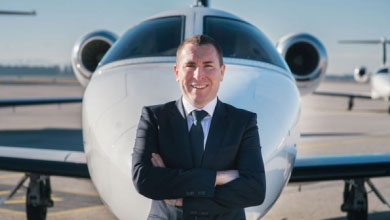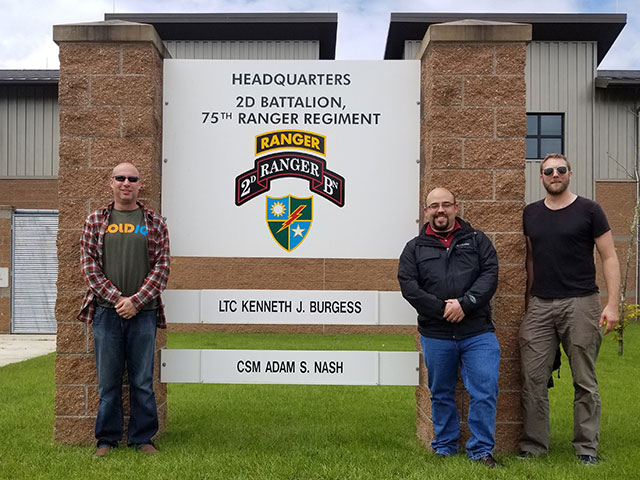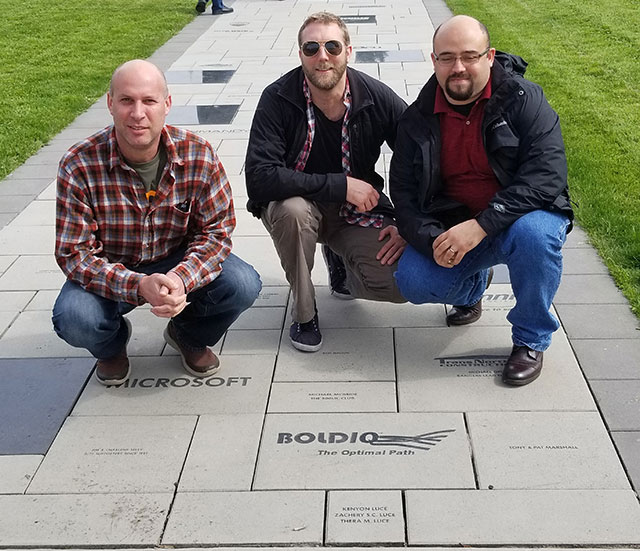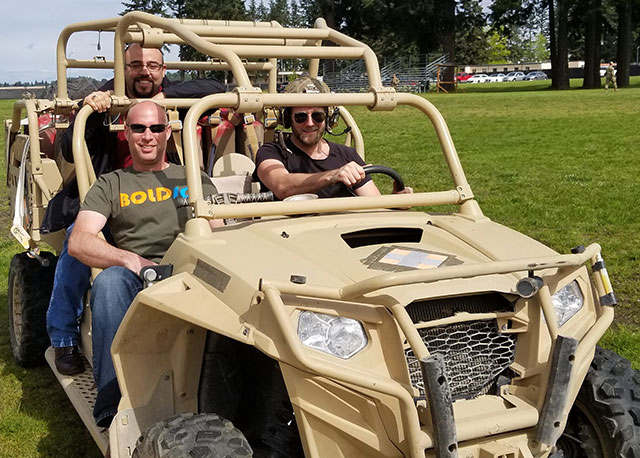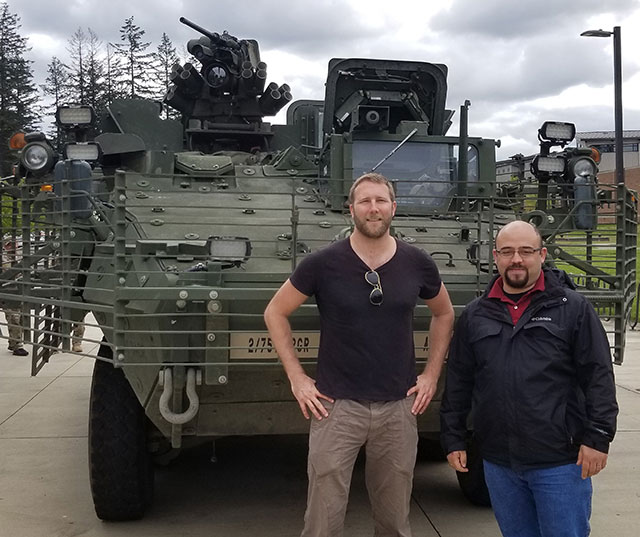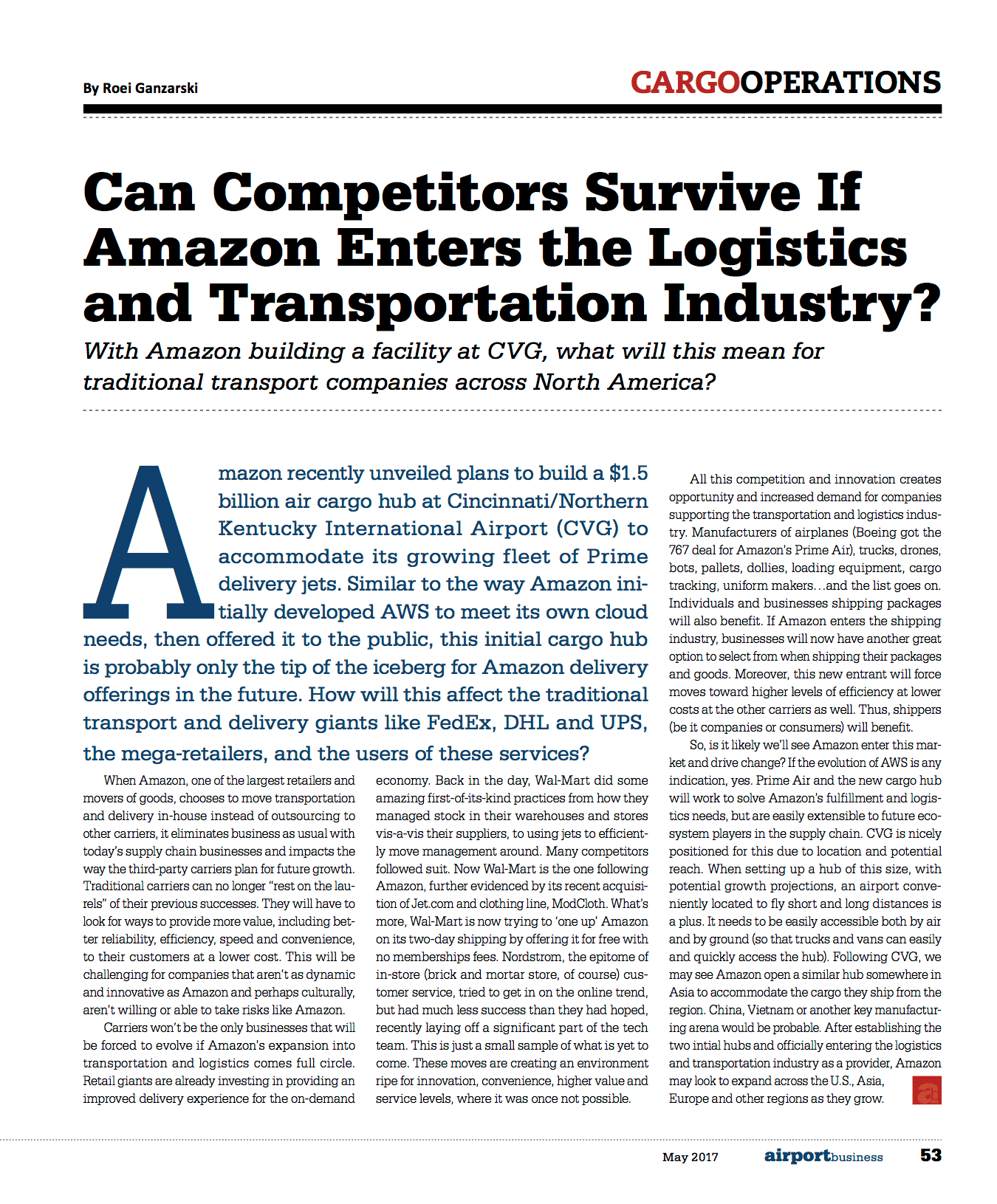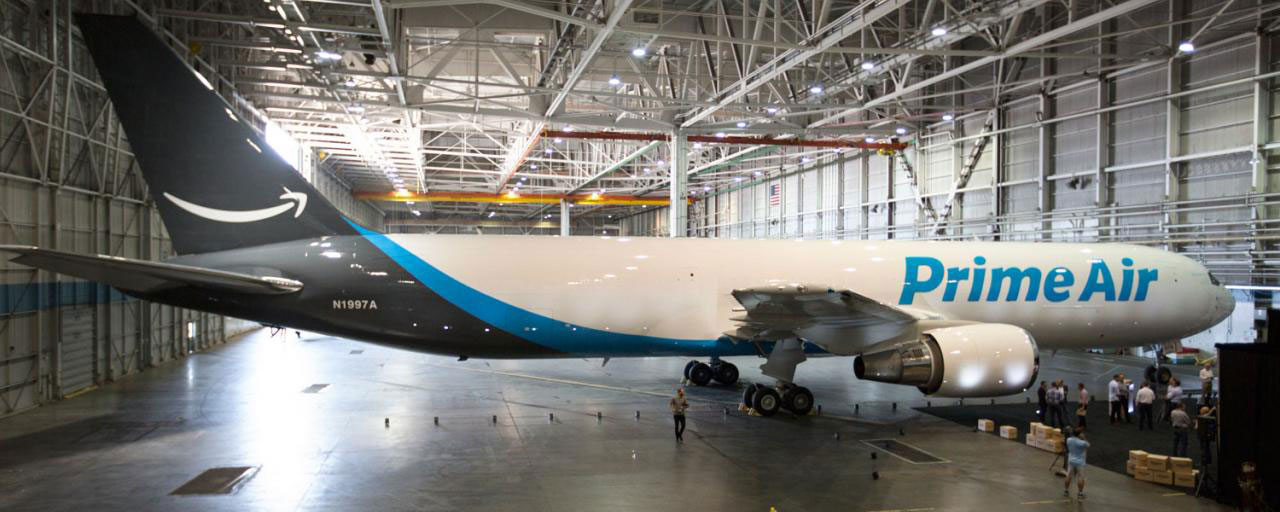May 15, 2017
In
Company News

Jennifer Storelli
May/June 2017
In the last two centuries, planes, trains, and commercial trucks changed the distribution industry and improved the way goods are transported. Now, a new era of innovation is ushering in a second generation of these delivery vehicles, namely drones, hyperloops, and automated trucks. Like their predecessors, each has the potential to reshape the transportation and logistics industry with new capabilities and efficiencies. Although these technologies are mostly in the testing phases, each new vehicle shows promise in its own, niche area of the delivery landscape to ultimately complement both new and existing options.
From air to over there
In the past 14 months, tests by Amazon, Domino’s, Maersk, UPS, and others have shown the possibilities for drone deliveries in hard-to-reach places and less-populated regions. Last fall, UPS partnered with drone-maker CyPhy Works to conduct trial deliveries of packages to such locations. In September, the two companies staged a mock delivery of an asthma inhaler from Beverly, Massachusetts, to Children’s Island, Massachusetts, which is approximately 3 miles off the Atlantic coast. Jerome Ferguson, director of autonomous systems at UPS, deemed the test a success, noting that drones can provide critical services in crisis-response deliveries.
On the commercial side, Matt McLelland, innovation lab research manager at Kenco, argues that it makes the most sense to utilize drone delivery when it offers a clear advantage compared with other methods. “If you’re delivering a 5-kilogram package in the middle of nowhere because some guy lives on top of a mountain, and there’s a little dirt road, and a UPS truck would take an hour to get to the top of that mountain, and a drone can fly there in 10 minutes, I’d say the drone has an advantage,” he explains.
A similar situation in France propelled international parcel delivery company DPDgroup to use drones to deliver small packages to difficult-to-access locations. “In France, many villages are isolated in the mountains—some are even inaccessible during winter—and we also have small islands, so we have a lot of opportunities,” explains Executive Vice President Jean-Luc Defrance.
After two years of testing, the Aschaffenburg, Germany-based delivery firm received authorization from France’s Directorate General for Civil Aviation (DGAC) to make drone deliveries along a regular, 9-mile route. Once a week, DPDgroup’s drone flies itself along a pre-planned path from Saint-Maximin-La-Sainte-Baume to an isolated business incubator in Pourrières to service technology companies in the area. In order to comply with DGAC provisions, a pilot follows the drone route on a screen and is able to take control of the drone’s engine at any stage of the journey.
DPDgroup’s drone is capable of flying approximately 9.3 miles at a cruising speed of about 19 miles per hour while carrying roughly 3.3 pounds of cargo. Weather is rarely a limiting factor for these deliveries, as long as the wind speed is less than about 19 miles per hour and it isn’t storming or hailing, Defrance says. At both ends of the route, delivery terminals secure the landing, takeoff, loading, and unloading phases of the process.
Because of drones’ speeds and abilities to reach isolated locations, they enable delivery companies to offer a new service to their hardest-to-reach customers via same-day and time-window delivery of small items. “In rural areas, it’s expensive to deliver within a specified time window or same day,” according to McKinsey & Company’s September 2016 report “Parcel Delivery: The future of last mile.” The report goes on to say that drones are surprisingly cost-competitive in rural areas, at only approximately 10 percent more than the cost of typical delivery models.
If used just for this purpose, drone deliveries could make up 13 percent of anything-to-consumer deliveries by 2025. This equates to approximately 500 million items in Germany alone, McKinsey & Company reports. For the United States, this would require a fleet of 250,000 drones.
Of course, there are limitations to this delivery method as well. Again, drones are vulnerable to weather, and most have a relatively small weight limit of about 11 pounds or less, McKinsey & Company points out. Plus, the drones that are designed to fly long distances at a low cost are big and require landing areas of about 22 square feet, which is less feasible in urban areas but possible in rural environments. In addition, battery capacity—which usually lasts for 12–18 minutes of flight time—limits how far a drone can travel, McLelland says. As such, DPDgroup’s drone’s battery needs to be changed in Pourrières before the drone can make its return trip, Defrance notes.
However, one of the biggest challenges to drone progress is regulations, McLelland points out. In the United States, for example, drones must remain in the sight of the operator. This severely limits companies’ capabilities to use drones for last-mile deliveries in the United States and is one of the reasons why many companies are conducting drone trials abroad.
In spite of this, McKinsey & Company predicts that drone deliveries could become commonplace in developed nations within the next 10 years.
All aboard
While drones have the potential to revolutionize last-mile deliveries to hard-to-reach locations, hyperloops could transform how people and cargo are transported across long distances. “Imagine a container coming from China to Central Europe in 10 hours instead of two weeks and how that can drastically change the sup-ply chain,” says Andres De Leon Cebreros, chief operations officer for Hyperloop Transportation Technologies (HTT). “If we are able to manage freight by drastically decreasing the delivery times … we will have a much more agile freight industry.”
A hyperloop system—as imagined back in 2013 by Elon Musk, founder, CEO, and chief technology officer of SpaceX, among other roles—is made of two steel tubes welded together in a side-by-side configuration to allow for two-directional traffic. These tubes are supported by pylons and equipped with solar panels to help power the system. Inside the partial-vacuum environment of the tubes, vehicles known as pods are propelled by linear-induction motors and supported by low-friction air bearings that use a compressed air reservoir and aerodynamic lift.
Since 2013, a few other companies have come up with their own hyperloop designs. Los Angeles-based HTT’s model is designed to send a pod carrying a 40-foot container through the tube every 40 seconds at speeds as fast as approximately 746 miles per hour, Cebreros says. Toronto-based TransPod has achieved similar speeds. Sebastien Gendron, TransPod’s founder and CEO, says this can cut the travel time from Toronto to Montreal—which usually takes 6 hours by car or 1.5 hours by plane—down to 45 minutes. Gendron also points out that hyperloops have multiple added advantages compared with other types of transportation:
- Lower cost: Hyperloop transportation will be priced at a lower rate than air freight, Gendron says. In addition, he estimates that installation costs are on par with those of the high-speed rail industry, at approximately $18 million–$24 million per mile.
- Reduced fuel consumption and emissions: Transpod’s system is designed to run on renewable energies, including self-sustaining solar power, thereby reducing emissions and eliminating the trans-portation mode’s dependency on fuel. By comparison, high-speed rail requires electricity, and cars, trucks, and planes require fuel.
- Fewer weather delays: The self-contained, low-pressure tube envi-ronment of hyperloop systems is impervious to weather delays.
- Improved customer service: “Delivering a superior customer experience is now a commodity that differentiates leaders from laggards,” Gendron says. “The ability to … ship products at ultra-high speeds will provide consumers with positive experiences about purchasing from these businesses, serving as a reason to encourage repeat patronage.”
Of course, hyperloops have their limitations as well. For example, size could be a constraint, according to the US Department of Transportation’s July 2016 report “Hyperloop Commercial Feasibility Analysis.” The hyperloop tube needs to be three or four times the size of the pod. Therefore, in order to accommodate a pod carrying a standard 10-foot by 10-foot by 40-foot container, the tube diameter needs to be fairly large, which might not always be feasible. Also, cargo weight limits, which have not yet been determined, will restrict the types of cargo that can be shipped via hyperloop. At present, TransPod is targeting a 10-ton pod capacity, Gendron says.
Beyond working out any technical details, the next steps will be addressing infrastructure and, as with drones, regulations. Still, hyperloop companies are pushing full speed ahead toward implementation. HTT currently is conducting research and development projects in Toulouse, France; Brno, Czech Republic; Abu Dhabi; Bratislava, Slovakia; and Quay Valley, California. TransPod expects to have a commercially viable product available by 2020.
Everywhere in between
While hyperloops can help with high-speed, between-city distribution and drones can facilitate deliveries to rural and difficult-to-reach locations, automated trucks can help handle the opportunities in between. “When you are looking at long distances across highways, the driverless truck will be a huge benefit,” says Roei Ganzarski, CEO of BoldIQ, a last-mile optimization software company. He notes that this type of vehicle has more flexibility than a hyperloop because it can travel to different buildings and depots, rather than only to and from specific stations.
Otto, a subsidiary of Uber, conducted a high-profile demonstration of this technology last October. Otto’s self-driving commercial truck hauled Budweiser beer more than 120 miles on the highway from Fort Collins, Colorado, to Colorado Springs, Colorado. A licensed driver was on board to handle the non-highway driving and to guide the vehicle onto and off of the highway but then only had to monitor the truck from the sleeper birth, as the driving automation system handled all of the highway driving functions.
Even though this automation concept may be new to on-theroad vehicles, similar technology already is being used on planes and ships. Pilots and captains handle the more difficult parts of the trip, such as takeoff and landing or entering and exiting a harbor, but an automated system and sensors control the tasks in between. Some of the systems and technology used in automated trucks— including adaptive cruise control, active brake assist, and lane-keep assist systems and cameras—also are commonly used in passenger cars, points out Sean Waters, director of regulatory affairs and product compliance for Daimler TSS.
Daimler Trucks North America’s Freightliner Inspiration truck—which was introduced in May 2015—is equipped with Highway Pilot, an SAE Level 3 driving automation system that can take control of the driving functions of the vehicle, including steering, accelerating, and braking. The system is designed for highway driving, because highway road conditions are relatively well controlled, predictable, and less complex, Waters says. “Lanes are typically well marked, access is generally not allowed for pedestrians or bicyclists, intersections are rare, and there are seldom traffic signals—all of which make automating the driving task easier.”
Here’s how the system works: As soon as the truck is started, its camera system begins monitoring road conditions. Once lane markings on the highway are detected, the driver is able to engage the driving automation system. In this mode, the truck autonomously stays in its lane and maintains a safe following distance behind the vehicle in front of it. If the vehicle ahead of it slows down or brakes, the truck does the same. While on the highway, the driver only needs to take over if the lane markings become illegible to the camera system—whether because of deterioration or inclement weather—or if the driver would like to change lanes or exit the highway. If the truck determines the driver needs to take over, an escalation scheme involving visual, audible, and haptic feedback mechanisms alerts the driver, and a countdown sequence prompts him or her to retake control.
Because the Freightliner Inspiration Truck is equipped with an SAE Level 3 driving automation system, the driver must remain in the driver’s seat for the duration of the trip. However, he or she is free to handle other operational and logistics tasks, such as scheduling future load assignments or coordinating with shippers, while the truck handles the driving. “Internal studies within
Daimler have shown relieving the driver from the monotonous and fatiguing task of driving a truck—even temporarily—can leave the driver feeling more refreshed and less drowsy,” Waters says. Tests are still being conducted to determine the best ways to keep the driver alert and ready to take over vehicle operations. “A more cautious approach is to periodically prompt the driver to place his or her hands on the steering wheel for a short time,” he explains. “Other approaches involve additional sensors that monitor the driver’s head position, open eyes, or other physiological markers for alertness.”
The reduced stress of the job coupled with the new, high-tech aspects of the role could make the truck-driving profession more attractive to younger, more digitized drivers, who could help fill the industry’s talent gap, PwC suggests in its 2016 report “The Era of Digitized Trucking.” The American Trucking Associations reported a shortage of 48,000 drivers in 2015, and this is only going to worsen as the current population of drivers ages into retirement, Waters notes.
The two other main benefits of this technology are safety and reduced costs. The US National Highway Traffic Safety Administration reports that nearly half of all fatalities happen on highways, and 94 percent of accidents are caused by human error. Taking the human out of the equation, or at least reducing the human’s role, will reduce the accident rate. The number of accidents caused by mechanical breakdowns also will be reduced because the system will constantly monitor the mechanical systems and alert the driver when repairs or preventive maintenance is needed. Plus, the technology adds efficiency to the acceleration and braking processes, thus reducing fuel use and emissions. Although exact cost savings are not discernable at this point, PwC estimates that fleet owners could save $19,000–$36,000 a year per truck, depending on regulatory changes and the stage of automation utilized.
PwC predicts that the development and implementation of automated trucks will come in stages. “Within the next 10 years, drivers may not be needed in long-haul trucks anymore, but will continue to take over trucks entering urban areas … and for local deliveries,” it states.
Merging futures
As these new solutions are further developed and tested, experts stress that these technologies will not replace existing modes of transportation. Instead, they will enable the transportation and distribution industries to unlock efficiencies in specific areas and explore new distribution territories. Drones will enhance the industry’s ability to deliver to hard-to-reach locations, hyperloops will speed up the time it takes to traverse countries and continents, and automated trucks will digitize the trucking industry to reduce the stress of highway travel for human drivers. With these new options, the transportation and logistics industry will be able to increase the speed and ease with which goods are shared and create an ever-more connected world.
Click to read the full story online




